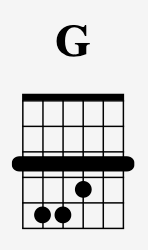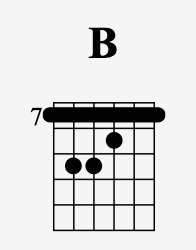Good Times Bad Times Guitar Lesson (Led Zeppelin)
Today I want to share with you the song that put Led Zeppelin on the map.
I am talking about “Good Times Bad Times” the opening track from their debut album Led Zeppelin. Aka Led Zeppelin I
The song showcases the whole band’s incredible musicianship and energy.
In this “Good Times Bad Times” guitar lesson we’ll cover the origins of the song, the chords, rhythms, and scales you’ll need to know to start playing like Jimmy Page today.
So make sure you’re in tune and let’s get started!
Who wrote Good Times Bad Times?
"Good Times Bad Times" was written by all four members of Led Zeppelin: Jimmy Page, Robert Plant, John Paul Jones, and John Bonham. The song is credited to the entire band, as was the case with many of Led Zeppelin's early compositions.
This collaborative approach to songwriting played a significant role in shaping their unique sound and contributed to their lasting impact on rock and blues music.
The song holds the distinction of being the opening track on their debut album, "Led Zeppelin." This album was recorded in 1968 and released on January 12, 1969, in the United States and on March 31, 1969, in the United Kingdom.
They blended blues, rock, and folk influences, setting a new standard for hard rock and laying the foundation for the band's legendary career.
The recording sessions for the album took place at Olympic Studios in London, England, and were produced by Jimmy Page. The choice to record at Olympic Studios was partly due to its state-of-the-art equipment and reputation for producing high-quality recordings.
During the sessions, Led Zeppelin managed to capture their electrifying live performances, and "Good Times Bad Times" truly shows their energy and raw sound.
The song's powerful guitar riff, thunderous drumming, and dynamic vocals set the stage for the musical journey that awaits listeners throughout the rest of the album.
"Led Zeppelin" was met with critical acclaim upon its release, and it quickly climbed the charts, reaching the top ten in the UK and the US. The album's success laid the groundwork for Led Zeppelin's subsequent albums, solidifying their place as one of the most influential and iconic rock bands in history.
What guitar was used on Good Times Bad Times?
The guitar used on “Good Times Bad Times” was a Fender Telecaster. Jimmy Page, especially later in his career, became very commonly associated with a Gibson Les Paul. But Led Zeppelin’s debut album was actually all played on a Fender Telecaster.
Good Times Bad Times Chords
You’ll need to know 8 chords to play “Good Times Bad Times” and those chords are E5, E, D, G, A, B, F#5, and C#. These chord shapes are crucial to know if you want to sound like Jimmy Page.
Let’s take a look at a few of these shapes.
E5 is a power chord played up at the 7th fret like this:

For E, all I will do from there is add another note by barring down like this:

Then D uses the same bar chord shape as E, it’s just shifted down 2 frets like this:

To play these next 4 chords, G, A, B, and C# you only need to know one shape. Then just move it up or down the neck depending upon which chord you are going for. This chord shape is a bar chord and has a root note on the 6th string. We’ll play all 6 strings.
Here is the first chord G played at the 3rd fret:

Next is A at the 5th fret like this:

Then just keep moving up two frets at a time. Here is B at the 7th fret:

And then move it up two more frets (now on the 9th fret) for C# like this:

Do you see how all four of these chords are the same shape but just on different frets? You do! Great This is a powerful key to unlocking Jimmy Page’s rock guitar style. For more help with this check out my Essential Rock Guitar System.
Ok, now let’s go on.
The last chord you’ll need to know is another power chord shape played at the 2nd fret like this:

A power chord is made up of the root note of the chord (the main note) and its perfect fifth (an interval of seven semitones above the root). The absence of a third note (major or minor) in the power chord makes it neither major nor minor, giving it a neutral and versatile sound.
They are also convenient for playing with distortion, which enhances their impact and gives them that iconic rock and metal sound.
Power chords are movable shapes, meaning you can slide them up and down the fretboard to play different chords without changing the finger positions.
What key is Good Times Bad Times in?
"Good Times Bad Times" by Led Zeppelin is in the key of E major. The three primary chords in the key of E are E, A, and B. The chords can often be noted with the Roman numerals I, IV, and V. Understanding how these chords function in the key of E major will help you learn this song faster on guitar.
E (I): The E major chord is the tonic chord in the key of E major, represented by the Roman numeral "I." As the tonic, it is the home chord or the chord that the key revolves around. When the song is in the key of E major, the E chord will sound stable and resolved. It's a strong and fundamental chord, often used to start and end phrases, verses, or the entire song.
A (IV): The A major chord is the subdominant chord in the key of E major, represented by the Roman numeral "IV." The subdominant chord is known for providing a sense of tension and anticipation before resolving back to the tonic chord (E in this case). It adds a touch of movement and variety to the chord progression, making it a common choice in songwriting. The A chord acts as a stepping stone, preparing the listener for the resolution back to the E chord.
B (V): The B major chord is the dominant chord in the key of E major, represented by the Roman numeral "V." The dominant chord is the most tension-filled chord in the key, seeking resolution back to the tonic chord (E). When the B chord is played, it creates a strong desire to return to the E chord, giving the music a sense of energy and anticipation. This tension and release are fundamental to many musical styles and are a crucial aspect of songwriting. You can hear this being used at the end of the first chorus of “Good Times Bad Times.” Here the band builds on a B chord for 3 bars before returning back to the tonic chord (E).
Verse Riff
The Verse riff is iconic and is played many times throughout the tune. The basic chord progression it is played over starts on an E chord at the 7th fret and then moves down to the D shape at the 5th fret. Each chord last one bar.
E (1 bar)
D (1 bar)
The first E chord is played with 2 eighth-note downstrums and then rest for the remainder of bar 1. Then in bar 2, instead of strumming the D chord Page would often arpeggiate the chord and create a cool riff like this:

Good Times Bad Times Guitar Solo Lesson
The guitar solo section in "Good Times Bad Times" is one of the standout moments in the song, showcasing Page's extraordinary talent as a lead guitarist.
It comes in after the second chorus and serves as a powerful new section in the song.
The guitar solo is a high-energy display of virtuosity, blending elements of blues, rock, and innovative techniques that became a hallmark of Page's style.
Here's an overview of the guitar solo section:
- Entry Point: After the second chorus, the song enters the guitar solo section. The transition is marked by a short drum fill by John Bonham, leading into Page's guitar solo.
- Fast and Furious: The solo begins with a rapid flurry of notes played with impeccable speed. Page's mastery of the guitar is on full display as he effortlessly flies around the fretboard.
- Big Bluesy Bends: Page's blues influence shines through as he incorporates expressive big bends and vibrato, adding soulful nuances to the solo. These bending techniques give the solo a vocal-like quality.
The progression happening underneath Page’s epic solo is just a one-bar figure. It starts with 2 beats of E and then 1 beat of D and 1 beat of A like this:
E D A
/ / / /
The primary scale that Page uses in his solo is the E minor blues scale. This scale can be played at the 12 fret like this:

Those same strings and frets would go like this:
6th string = 12, 15
5th string = 12, 14
4th string = 12, 14
3rd string = 12, 14, 15
2nd string = 12, 14
1st string = 12, 15
Conclusion:
"Good Times Bad Times" introduced the world to Led Zeppelin’s sound. Driven by amazing musicianship all around this song set the stage for Led Zeppelin's legendary career. Be sure to take each part slowly, and work it out piece by piece. Then once you start to feel comfortable try playing it along with the recording. And for another great bluesy rock guitar lesson check out “Tush” next!
Like this blog post? Get Jon’s best guitar lessons straight to your inbox.
